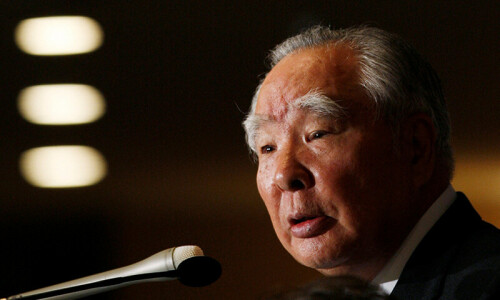 It was only till recently that people had to wait for months or got delivery of their booked cars after paying a premium to a dealer. The banks then offered auto loans at very low rates that mainly financed the purchase of new cars, especially for fixed income groups.
It was only till recently that people had to wait for months or got delivery of their booked cars after paying a premium to a dealer. The banks then offered auto loans at very low rates that mainly financed the purchase of new cars, especially for fixed income groups.
The car-makers raised their plant capacity substantially during 2001-06 to meet the increased demand. They also imparted necessary skills to their workers. All this was done on the assumption that they would be able to reap profits for a long time.
However, the times have changed. The sale of cars has reportedly fallen by 55 per cent in July, 2008 to 4,744 units as compared to 10,516 units in the same month last year. Another news report says that the current crisis in the automobile sector has claimed the jobs of around 150,000 workers, mostly in auto vending sector which is operating at 40 per cent of its installed capacity.
Many reasons such as increase in the energy and steel prices, levy of five per cent federal excise duty, increase in sales tax by one per cent and fixed rates of withholding tax are cited for this situation. But these are not the main reason.
After 9/11, there was an excess liquidity with the banks which had not only lowered the interest rates to very low levels but also launched various schemes relating to consumer financing. It was assumed that even if that situation did not remain for ever, it would continue for a long time. But such thinking did not prove right.
During that period, the economy failed to develop the capacity to absorb the domestic and international shocks. The abnormal rise in the fuel and commodity prices and the political uncertainty worsened the situation. Thus, at present, the economy is in very dire straits.
The monetary policy statement observes that, “in one sense, Pakistan is no exception. Like other countries it faced confluence of global shocks. What distinguishes Pakistan, given its political and economic vulnerabilities relative to other developing and emerging countries, is that the impact of global shocks turned out to be rapid and severe.”
Prices, especially of essential commodities, are rising at a very rapid pace. The intensity may be gauged from the fact that in June, 2008 on year-over-year basis CPI increased by 21.5 per cent which is highest in the 30 years--food inflation 32 per cent and non-food inflation 13.8 per cent. In July, the inflation rate went up to 24.33 per cent as compared to 6.37 per cent in the same month last year.
This has affected all the sectors of the economy and forced the central bank to take some drastic measures and abandon the easy monetary policy. Since July 2007, it is raising the discount rate which is now at 13 per cent to control the demand pressures in the economy. Bank credit has been made more expensive. It seems that the major effect of this step would again be the exclusion of the middle class, which took some benefit from the liquidity for a very short time.
The rise in interest rates has affected the ability especially of those middle class borrowers who borrowed on floating rates. Similarly, inflation, unemployment and declining wages have adversely affected the capacity of borrowers to repay loans.
The consumer debt defaults are rising. As banks had not covered most of these loans with proper collateral, they had to resort to unfair means for loan recovery and yet did not succeed in many cases, mainly due to outside pressures and legal impediments. Similarly, the value of the confiscated cars, which were auctioned, was not enough to set off the outstanding amount of loans. Thus, in the recent past, all categories of consumer loans witnessed the rising ratio of non-performing loans (NPLs) but it was more evident in the case of auto loans.
In the March 2007, the ratio of NPLs to total auto loans was 2.6 per cent which in March 2008 rose up to 5.9 per cent. Thus banks have become more vigilant in extending consumer credit and their restraint is more evident in the case of auto loans as some of the banks have even suspended the auto finance scheme.
Due to this, not only the growth in consumer loans decelerated in July-March 2008 to 4.8 per cent as compared to 11.8 per cent in the corresponding period last year but in the quarter of Jan-March 2008 consumer credit recorded net retirement. Thus the share of consumer loans in the total private sector credit fell to 14.4 per cent at end March 2008 as compared to 15.4 per cent in the corresponding period last year.
Apart from the reluctance of the banks to give consumer loans, another reason for the decline in this type of financing is that the people are also no longer enthusiastic to get the expensive loans.
This is only the beginning. The situation is unfolding and effects on both the borrowers and the banks would become clearer in due course of time.















































Dear visitor, the comments section is undergoing an overhaul and will return soon.